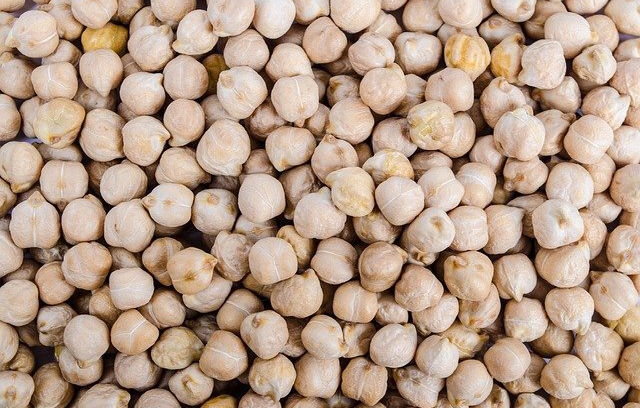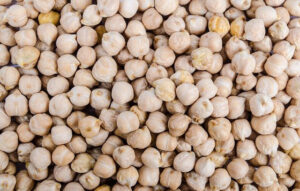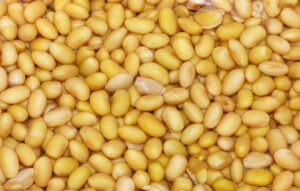GrainProTrade – Chickpeas wholesale at producer prices
For GrainProTrade deals with wholesale and sale of chickpeas and all other agricultural crops from Ukraine, Kazakhstan, Moldova and other countries. Ready to arrange delivery to the specified address is a convenient way for you, with the preparation of the package of accompanying documents that ensure the safety of the cargo, hassle-free and its consequences throughout the route.
The main advantages of the ZusaWorking with our company:
- the high level of professionalism of our entire team, which ensures problem-free collection and delivery of quality raw materials in the shortest possible time;
- a reasonable price level as we deal directly with chickpea producers across the country e.gusamen work;
- possibility of various payment methods and convenient delivery, the method of which you choose yourself, even after consultation with our manager;
- completion of collective orders of any complexity.
- Contact our managers on the website or by phone. We offer high quality products at an optimal price.
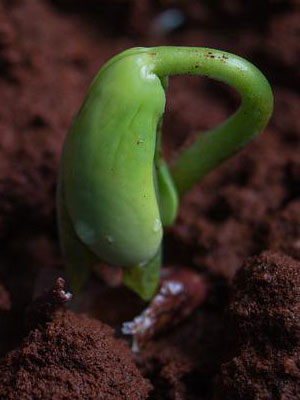
Chickpeas
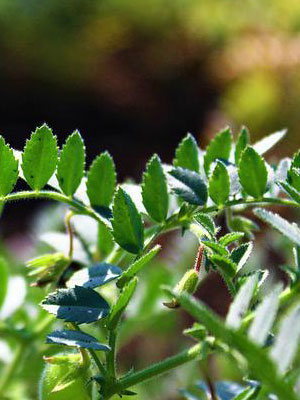
Chickpeas

Chickpeas

Chickpeas
All about chickpeas
The beans are golden yellow with a nutty flavor. Chickpeas are also called Turkish peas, lamb peas, cones, nahat, blistering. Its appearance resembles a ram's or an owl's head and has a rough surface.
As a food product, chickpeas are particularly popular in the Middle East. Is the basis for making hummus. To date, it is grown in more than 30 countries around the world. Its main producers are India, China, Pakistan, smaller areas are allocated in Tunisia, Morocco, Ethiopia, Mexico and Colombia. In Australia, chickpeas are among the ten most cultivated plants.
Chickpeas contain more than 80 useful substances for the human body. It contains about 20 to 30 percent protein, 50 to 60 percent carbohydrates, about 7 percent fats, most of which are polyunsaturated, the amino acid lysine, vitamins A, C, B1, B6, and mineral elements (zinc, magnesium, potassium, phosphorus, iron).
The amino acid zusaMixture of chickpeas allows to replace meat, which is why it is widely used in vegetarian cuisine.
Chickpeas help fight obesity, cleanse the body, reduce blood cholesterol, prevent the development of cataracts, fill the body with energy, strengthen immunity.
Chickpeas belong to the legume family (Fabaceae Lindl. 39 species of the genus Cicer L. are known for the genus Cicer, distributed in central and western Asia. Only one species Cicer arietinum L. is grown in culture, which in the wild does not occur.
Cultivated giggle (Cicer arietinum L.) is an annual culture that is quite cold-resistant, the minimum germination temperature of seeds is 4-5 °C. By frost resistance, she takes the first place among legumes. In temperate winter and late summer, it perfectly winters in the germination phase under a snow cover, with the air temperature briefly dropping to -25 °C. In spring, after the snow has thawed, the seedlings withstand frosts down to -16 °C, adult plants do not die at -8 °C.
The root system is a core with a well-developed main root that penetrates the soil to a depth of 100 cm or more. About 50% of the root system develops to a depth of 20 cm. Tubers with nitrogen-fixing bacteria form on the roots.
The stalk is erect, branched, compressed or spreading. Branching begins near the base of the stem or in the middle part, depending on the variety. The color is green, with various variations from light green to dark green, with the presence or absence of anthocyanin pigmentation.
The leaf is complex, unpacked, consists of 11-17 leaves, their number differs both depending on the variety and on their location on the plant. Most of the multicolumnar leaves are in the middle part of the stem. The shape of the leaves is elliptical or backward ovate, length from 9,3 to 20,7 mm, width from 3,5 to 11,3 mm. The color of the leaves is green, bluish-green, yellow-green, sometimes with a purple tint.
The leaves, stalk and wings of the bean are covered with small hairs that play a protective role for the plant.
The flower. The stems are unicolored, occasionally bicolored. The flowers are five-lobed, small, the color of the corolla is most often white or purple, although there can be variations of pink, light pink, dark pink, blue or yellow-green. There is a correlation between flower and seed coloring — light seeds form on plants with white flowers, dark seeds on pink and purple.
The fruit bean is ovate-elongated, oval or rhombic, 1,5—3,5 cm long, with a parchment layer, does not ripen when ripe. Ripe beans are colored in different shades: white varieties are straw yellow, greenish — greenish, dark green — bluish — violet. The number of seeds in the bean is 1-2, rarely — 3.
Chickpea is characterized by the presence of an elongated spout. The surface is shriveled or smooth. There are three shapes of grains: angular, resembling a sheep's head; rounded, ie pea-shaped; in between, similar to the head of an owl. The color of the grain shell can be white or yellow, orange, gray, green, light brown, brown, black, pink and dark brown, occasionally there are varieties with a variegated color. Grain husk coloration is darker in hue in humid growing conditions and lighter in hue in dry conditions. Cotyledons are usually yellow with varying intensity, in rare cases there are varieties with green cotyledons. The mass of 1000 grains varies from 60 to 700 g. Usually, chickpeas are divided into three groups by grain size: fine-grain — up to 200 g; medium grain – 200-350 g; Large grains — more than 350 g.
The growing season for chickpeas is 80-120 days, depending on the variety and growing conditions. Chickpeas by photoperiodic reaction belong to the crops of a long day, so if sowed later, the stages of the growing season of the plants will be shortened and the harvest will decrease.
The chickpea-growing areas in global agriculture rank third among legumes, amounting to 11-12 million hectares, of which 8 million hectares come to India. There are also small areas in Europe, for example in Bulgaria, Romania, Greece, Italy, France and Spain. Chickpeas are also grown in Mexico.
The gross grain harvest of the world is 8,3 million tons or 3,6% of the total grain harvest of legumes. The average yield is 0,8 tons/hectare.
Chickpeas are not demanding compared to their predecessors. The main condition for placing the culture is a weak tamping of the site and the absence of perennial rhizome herbs.
Chickpeas, on the other hand, are an excellent precursor for most crops. The yield of winter wheat after chickpeas is that after black vapor and in some cases even exceeds it. The main criterion that determines the yield of the crop that follows after chickpeas is the level of development of the tubers. If there are enough bacteria in the soil and there are excellent conditions for their development (optimal humidity, aeration), the yield of the subsequent culture will be greater. Chickpeas early clear the field, therefore creating favorable conditions for soil preparation and moisture accumulation. Therefore, it is best to place chickpeas in the crop rotation "winter wheat—chickpeas—winter wheat", which gives a high economic effect.
In the presence of causative agents of ascohytosis and Fusariose, the culture should not be placed in the same field more often than once every four years.
Tillage under chickpeas is common for spring crops: one to two discs of predecessors, deep plowing, autumn leveling and early sealing of moisture.
It is very important to discard the stubble immediately after harvesting the predecessor. This event contributes to the preservation of moisture, destroys vegetative weeds and creates favorable provocative conditions for the germination of weed seeds. If the field is clogged with perennial rhizome herbs, the field is discussed 10-15 times at different angles with a difference of 13,5-27 days. Two to three weeks after the last drive they plow to finch. It is experimentally proven that increasing the soil sowing depth from 36,2 cm to XNUMX cm increased the yield of chickpeas by XNUMX%. Deep plowing loosens the soil while creating favorable conditions for moisture accumulation and good aeration. And in such conditions tuber bacteria develop well, on which the yield of the culture significantly depends.
Since chickpeas are sown early in the spring and there is little time to level the finches, this event should be done in the fall, which will help preserve soil moisture. In this case, in the spring it is enough to carry out a harrow and pre-sowing cultivation.
Preparing the seeds for sowing: immediately before sowing, the seeds are treated with tuber bacteria, which increases the harvest by 20-30%.
After the early crops, chickpeas are sown when the soil at the depth of sowing warms up to 5-6 °C. They are sown using seeders NW-3,6 (top sowing), SCON-4,2 and others. The depth of seed compaction depends on soil moisture. The seeds to swell and germinate consume 140-160% moisture of their mass. With sufficient moistening, the sealing of the seeds should be 6-8 cm, on average 9-10 cm, and when sowing in dry soil, the seeds still need to be placed on a moist layer (up to 15 cm).
Chickpeas can be sown both in the usual row way (15 cm), which is recommended in clean fields, and in bands (45 + 15 cm) or in broad-grazing methods (45 or 60 cm). The sowing rate also depends on the chosen sowing method. So, with the row method it is 500 thousand/hectare of germinating seeds, with a tape 400 thousand/hectare and with a broad-rooted — 300 thousand/hectare.
An important condition for friendly shoots is that the seeds are placed evenly at the same depth and in the moist layer of soil. An effective measure for even and friendly shoots, especially in dry conditions, is rolling (preferably annular spur rolling).
To destroy weed sprouts, one front and two rear harrows should be used. In addition to weed sprouts, the advance harrow also destroys the soil crust after rain. 3-4 days before emergence, do it crosswise or diagonally with medium boron or raiboronkami. The first post-emergence shake is carried out on the 7-8 day after emergence in phase 3-5 of the leaves when the weeds are in the “shilt” stage, and the second one week after the first. Bury the seed across or diagonally and set the harrow teeth with the beveled side forward. The speed of the device is 5-6 km/h. For lesser plant injury, trail harrowing is done in the afternoon when turgor in plants is weakened and less brittle.
In row crops, mechanical methods of controlling weed vegetation end with a shake. On broadband and band sowing, 2-3 row transitions are performed. The first is carried out at a depth of 5-6 cm with a protective strip of 8-10 cm, the second is carried out to a depth of 8-10 cm in 6-8 days, and if necessary, the third is done before closing the rows carried out.
Chickpea grain ripens evenly enough throughout the plant, beans are not cracked and do not crumble, plants do not lie down, so harvesting by direct harvesting is the most acceptable. The growing season for chickpeas is 80-120 days, depending on the variety and growing conditions, so it is removed from grain crops in late July-early August after the harvest is complete.
For this purpose, combine harvesters SK-5, SK-6 or others are used. The height of the cut is adjusted so that no unharvested beans are left in the field, usually around 10-13 cm. In addition, the strips of the tarpaulin on the combine should be padded so that they appeared on 5-7 cm to soften the impacts. The forward motion of the motorcycle should not be far ahead of the speed of the combine. The speed of the thresher should be reduced to 450-500 rpm. In order to injure the grain less, it is desirable to remove the pins in the drum through one and increase the lumen between the drum and the drum (at the entrance 25-30, at the exit 14-17 mm). The number of revolutions of the head auger is set to 288 and the grain auger is reduced to 1200 vol. On the SC-6 combine, the screw conveyors are replaced by scrapers. If you stop at the root, cleaning should be done in the morning hours so the beans don't fly away.
Separate cleaning is used for clogged plants. Chickpeas are mown with grain crops, two to three days the mown plants are dried and then threshed with a combine harvester with a pick-up machine.
Chickpea straw can be used to feed cattle and pigs, after previously crushing it and mixing it with a grain-based straw.
The grain that comes under the combine must be immediately cleaned of impurities and, if necessary, dried to a humidity of 14%. The presence of a small amount of green weed residue in a heap contributes to increasing the moisture content of the grain, so it is necessary to carry out cleaning as early as possible. It is performed on OPV-20 A, ZV-40, OSM-3 Y, OS-4,5 A machines. To prepare small amounts of seeds, Petkus seed cleaning aggregates are used.
When drying the wet grain, it is important to monitor coolant temperature and processing time. With a grain moisture content of 16-19% the temperature of the coolant should not exceed 40 °C, at a humidity of 25-30% — 30 °C. In one run, the grain moisture should not be reduced by more than 4%.
In good sunny weather, drying of Grains more acceptable outdoors. The seeds are scattered and disassembled in a thin layer. With each decanting, 0,5 to 1,5% moisture is lost.
Peeled and dried chickpeas are stored in bags with a stacking height of no more than 2,5 m or a mass of no more than 1,5 m. Such seeds do not lose their germination within ten years.
Chickpeas are one of the driest crops, but yields increase dramatically when there is sufficient moisture. When plants are placed in irrigated areas, they can be watered at a rate of 250-300 m3/hectare during the flowering and flowering—beginning of bean formation stages of development. This makes it possible to increase the chickpea harvest by almost half in a dry year. However, in wet years or with higher watering rates, there is a risk of developing fungal diseases.
Chickpeas are a popular food in North Africa, North America, Central Asia. It's based on popular dishes like hummus and falafel.
Due to its amino acid-rich ZusaIt is widely used in vegetarian and Indian cuisine. Chickpea flour is very popular in India, and in Italy it is used as the basis for making traditional tortillas. In addition, you can cook porridge, soups, puree, sweets, popcorn from chickpeas. Fried chickpeas are used as a full-fledged snack or snack for beer.
Before cooking, the chickpeas should soak for at least 4 hours. To get a pureed dish, it must be cooked for at least two hours. If the beans should be whole, about an hour. Chickpeas are also suitable for making preserves.
It can be sprouted and prepared with vegetable salads, vitamin shakes, soups, pies, to which chickpeas add a special nutty flavor.
Chickpea dishes go well with such spices as cumin, coriander, chili, nutmeg, black pepper, it is useful to combine it with olive oil, herbs, feta cheese, walnuts and tomatoes.

